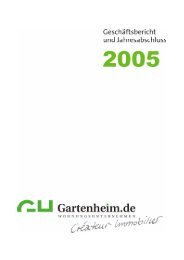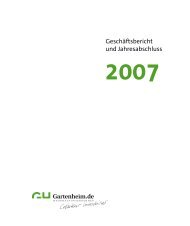analysis of the influences of solar radiation and façade glazing ...
analysis of the influences of solar radiation and façade glazing ...
analysis of the influences of solar radiation and façade glazing ...
Create successful ePaper yourself
Turn your PDF publications into a flip-book with our unique Google optimized e-Paper software.
4.3 Future research 103<br />
<strong>of</strong> <strong>the</strong> annual operation <strong>of</strong> <strong>the</strong> <strong>solar</strong> domestic hot water system revealed that <strong>the</strong> best<br />
<strong>solar</strong> collector tilt angle is 70° for <strong>the</strong> cold period <strong>and</strong> 35° for summer time. If <strong>the</strong><br />
tilt angel is fixed, <strong>the</strong> best <strong>the</strong>rmal performance can be obtained at an angle <strong>of</strong> 45°.<br />
It turned out that <strong>the</strong> <strong>solar</strong> conversion process is about ten times lower in winter<br />
than those during <strong>the</strong> summer time. Based on <strong>the</strong> <strong>analysis</strong> <strong>of</strong> <strong>the</strong> influence <strong>of</strong> <strong>the</strong><br />
volume <strong>of</strong> accumulated water on <strong>the</strong> <strong>the</strong>rmal performance <strong>of</strong> <strong>the</strong> <strong>solar</strong> DHW<br />
system, it can be concluded that <strong>the</strong> recommended volume <strong>of</strong> <strong>the</strong> storage tank for<br />
<strong>the</strong> developed case is 4 m 3 . Moreover, it was shown how <strong>the</strong> increase <strong>of</strong> system<br />
<strong>the</strong>rmal capacity leads to <strong>the</strong> prolonging <strong>of</strong> <strong>the</strong> storage tank operating period with<br />
raised output temperature <strong>and</strong> a simplified description <strong>of</strong> this physical process was<br />
proposed. Results <strong>of</strong> <strong>the</strong> calculations showed that <strong>the</strong> temperature <strong>of</strong> storage water<br />
increased over 50°C only between April <strong>and</strong> September. We can conclude that <strong>the</strong><br />
total designed area <strong>of</strong> <strong>solar</strong> collectors is too small to support <strong>the</strong> heating system.<br />
� It is suggested to use <strong>the</strong> following equivalent parameters <strong>of</strong> Poroton-T9 in <strong>the</strong><br />
calculations: heat capacity equal to 855,1 J/kgK, heat conductivity equal to 0,09<br />
W/mK <strong>and</strong> unit weight equal to 653,15 kg/m 3 .<br />
4.3 Future research<br />
The future work within <strong>the</strong> VASATI 2.0 project will be focused on:<br />
� design <strong>and</strong> practical application <strong>of</strong> a building performance monitoring system,<br />
� fur<strong>the</strong>r experimental investigations <strong>of</strong> <strong>the</strong> <strong>the</strong>rmal performance <strong>of</strong> complete external<br />
walls <strong>and</strong> <strong>the</strong> estimation <strong>of</strong> real energy consumption when <strong>the</strong> co-operative<br />
apartment buildings are occupied in order to verify <strong>the</strong> results <strong>of</strong> selected<br />
estimations presented in this dissertation.





